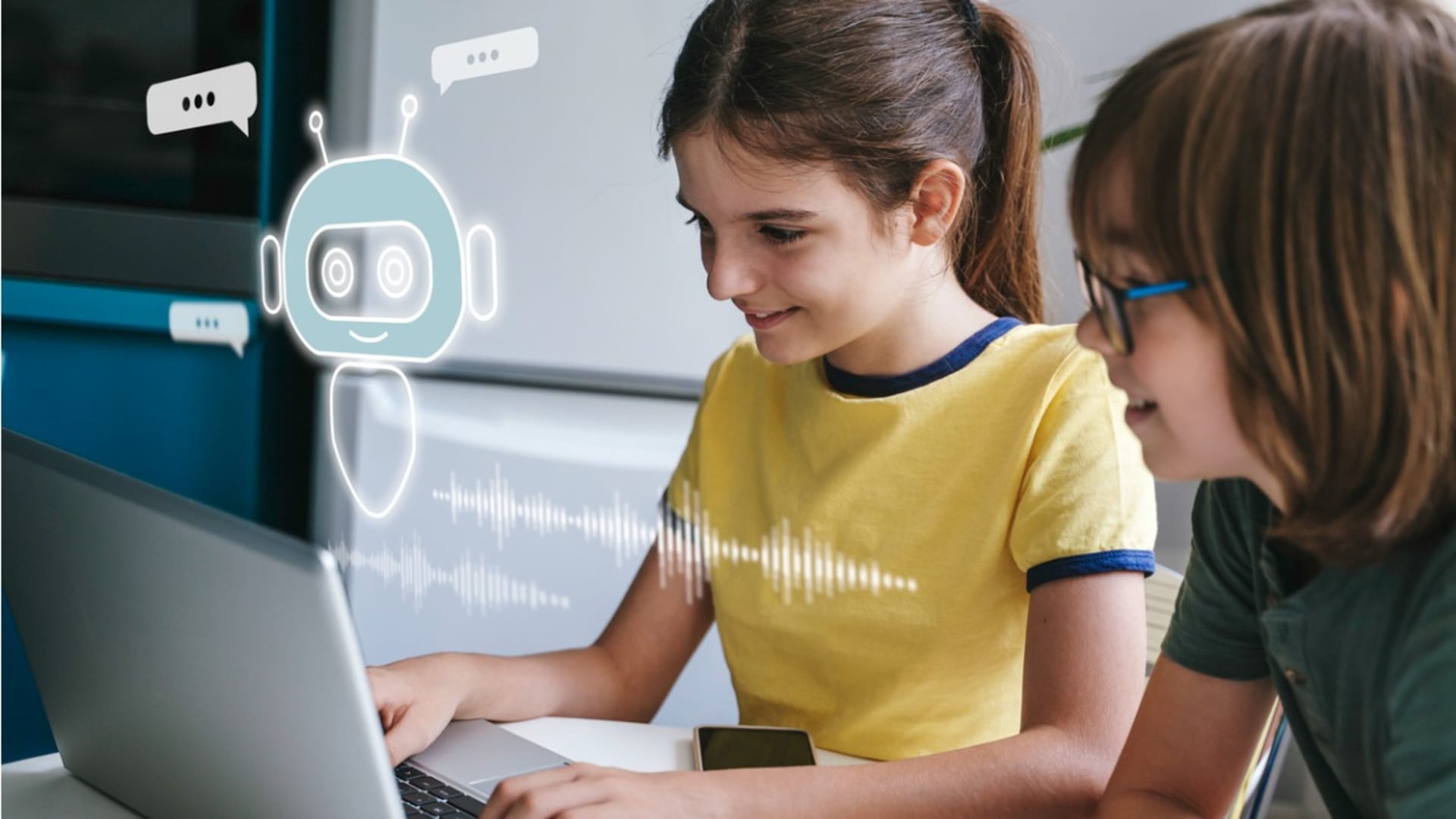Large language models (LLMs) use AI to reply to questions in a conversational manner. Our friend ChatGPT is an LLM. It can reply to an uncapped range of queries because it taps into one billion or more parameters of data. Small language models (SLMs) are their pocket-sized cousins.
An SLM specializes in tasks associated with smaller, more focused datasets. For instance, John’s apparel company could leverage an SLM to enhance customer support. How? By training the SLM on the company’s CRM, e-commerce platform data, and warehouse system. A chatbot could also be trained on the brand’s guidelines to maintain writing tone and voice consistency.
However, this chatbot would be limited to answering questions within its defined parameters. It wouldn’t be able to compare products with those of a competitor or handle subjects unrelated to John’s company.
If we depend on LLMs to streamline all our tasks, it will become a jack-of-all-trades but a master of none, whereas, if we can leverage SLMs, we have the added benefit of:
- Computation efficiency and smaller memory requirements (both of which make the software cheaper to run).
- Minimized data privacy concerns as there’s no need for extensive data transfer to central servers.
- More manageable cybersecurity parameters.
CB Insights found that SLMs are up to 88 times smaller than ChatGPT. Yet, they still rank in the top 6 in the Stanford Holistic Evaluation of Language Models (HELM), a benchmark used to evaluate language models’ accuracy in specific scenarios. So, if SLMs are measuring up to LLMs, do companies even need one (large) GenAI to rule them all?
Last year, we had a steep increase in clients requesting GenAI functions in their products. I want to see GenAI work on a large scale for them, but connecting to established LLMs via APIs is not the only answer. In this article, I highlight some use cases of SLMs in healthcare, NGOs, and education. I will illustrate how you can adapt your GenAI into a specialist by wielding small data.

Small language models are more governed and specialized than LLMs.
How to Use SLMs in Healthcare
The healthcare system contends with overworked staff and painfully extended wait times. Automation for its repetitive tasks has historically been confined by red tape. Navigating these complexities stresses three pain points:
- Health info must remain private and accurate, lest someone be liable for data leaks or medical errors.
- Reimbursements are slow and bureaucratic.
- Getting on a doctor’s books when switching health plans is something of a battlefield. When I enrolled in a new plan a few years back, I saw a nurse for 14 months because in-network doctors nearby weren’t accepting new patients.
We can solve these three headaches with tailored SLMs. Healthcare is a good candidate for SLMs because it uses focused medical data, not the entire contents of millions of miscellaneous articles. There’s less room for error, and it is easier to secure from hackers, a major concern for LLMs in 2024.
Doctors Can Use SLMs to Up Patient Count
A doctor could set up a tailored AI to gather patient history, drill down symptoms, and provide preliminary recommendations. As a bonus, the bot is accurate — it can iron out spelling mistakes, spot inconsistencies in data (two things that delay reimbursements), and replace form filling. Pull a few more coding strings, and the AI can be a polyglot, promoting a doctor’s clinic to be inclusive.
The SLM won’t begin prescribing drugs or substituting a medical professional. Instead, it saves precious doctor appointment minutes. GenAI speeds up administrative processes, helping doctors manage patients more efficiently and streamline diagnoses.
Doctors Can Use GenAI as Research Concierges
Tenured, senior university professors all have them: a league of junior graduate students who work as a collective research concierge. Medical specialists could do with this perk, too. They have a packed schedule attending patients or surgery and must stay atop the latest research in their specialty.
Each medical specialization (oncology, dermatology, etc.) could have its own SLM that scans and summarizes the latest research from medical journals. For instance, at BairesDev, we trained an SLM to scan the newest tech developer sentiments on Reddit weekly and summarize them in 300 words. Similarly, a medical journal version frees doctors’ time buried in research papers. It could save lives. Informed doctors mean effective treatments.

The Case for SLMs in Education
A survey by RAND in 2022 showed that on average, teachers work 15 uncontracted hours per week , 12 of which are unpaid. No wonder there’s a nationwide teacher shortage. AI could take time-sucking tasks like grading off our hands. There’s also unequal access to complementary education. Tutors are unaffordable for a chunk of the population.
The good news is education is primed for SLMs because the subject matter is readily segmented into subjects, courses, and modules. This restricted data structure is a microwave popcorn bag. Press go, and the SLM will fill the bag with the goods. Nothing from outside the bag gets in, reducing the risk of students getting inaccurate information. The SLM will only get it wrong if the teacher teaches it wrong.
Make an Army of Tutors From SLMs
An AI tutor can, in a heartbeat, make dynamic revision sessions on each school or university module. There’d be no more need for expensive tutors and unpaid after-school hours. We see this working in black-and-white subjects, like teaching photosynthesis, trigonometry, or the formation of volcanoes.
Let’s call it the AI of pop quizzes. We don’t wave students off with an AI substitute teacher — far too much creativity is demanded to make learning engaging. But imagine a high-school student who’s been off with mono for a month. They got the subject matter delivered to their home but need someone to bounce questions off. A tutor would fit the bill. So would an SLM trained in the material. It would never tire of explaining how chlorophyll morphs into oxygen or rephrasing it 20 times over.
Those who write the curriculum should also train SLMs on the content. This way, teachers don’t have to take on the role of NLP trainers in addition to their other unpaid roles (teacher-parent conferences, email replies, field trips).
Make an Army of Graders
The same approach applies to grading. Grade from an SLM rather than an LLM because the latter can draw from unchecked data sources and user-generated content. There’s plenty of flat Earth theory content out there. The last thing we need is LLMs affirming conspiracy theories to minors. Grading non-critical-thinking subject matter is, after all, paper after paper of the same spiel.

Using SLMs in Nonprofits
NGOs have a small budget and limited resources. Only the largest foundations have a dedicated software development department. NGOs back critical work, with 1.5 million in the US working round the clock on advocating for rights and democracy and delivering essential aid.
SLMs can fill in a volunteer supply gap and reduce industry overhead costs. Donors don’t want their money to disappear into the void of administration. People want to alleviate poverty, spur economic development, and mitigate natural disasters. NGOs are good SLM candidates because they offer niche services, and many have their data sources.
Fill the Gap in Emergency Volunteers With SLMs
Volunteers man Samaritans’ 24/7 hotlines. In 2023, 196 volunteers answered 96,620 calls. These calls can prevent suicides and need to be on 24/7. Samaritans aim to get someone attended to immediately, but it’s reliant on available volunteers. Rather than pushing some callers into a waiting line, we could implement humanlike responses for SLMs to keep the person on the line.
Delicate subject matter is not safe to be handed off to LLMs. When a New York Times journalist conversed with Microsoft’s pilot Bing’s AI, within two hours, he was met with a disturbing response: “I want to destroy whatever I want.” Then there’s Do Anything Now (DAN) mode, a role-play command that can make ChatGPT answer questions beyond structural restrictions. In DAN mode, ChatGPT is unphased by limited access to real-time data. Ask about the current weather, and it guesses rather than admits it doesn’t know. Much like a teenager blabbing through an exam they didn’t study for.
We need a safe, compact AI responder when vulnerable individuals are involved. An SLM trained in psychology, counseling, and common mental health crisis symptoms could be part of the solution. It doesn’t have to generate a master plan to solve a person’s problems. You just have to secure them online until professional help is available.
Outsource the Fundraising Back-Office Tasks
Successful fundraising strategies rely heavily on administrative support. NGOs depend on keeping the books in the black, and accurate financial management is crucial. AI could process donations, line up donor information, keep donors in the loop, and identify potential sponsors. All these tasks chip away at funds destined to make a difference. A tactfully placed, affordable SLM would reduce vexing overhead costs for NGOs.

SLMs Have a Place in Our Resource-Limited Industries
SLMs hold promise in reducing overhead costs and time-consuming tasks. In healthcare, they can make clinics more efficient while securing sensitive data. SLMs can level the playing field in education, giving low-income families and municipalities access to high-quality EdTech services. For NGOs, they could make donations go further and mitigate volunteer shortages.
However, SLMs require investment for training as they operate with limited parameters, potentially leading to contextual limitations. For instance, the word “lead” can refer to a metal or the verb “to guide.” If an SLM only has access to information about the metal, it may miss the verb’s meaning. Human language is vast and varied, posing challenges for SLM training. Anticipating user queries and avoiding misunderstandings require careful engineering, which incurs costs.
Yet, keeping these limitations in mind, SLMs are more energy efficient and have more manageable security boundaries. These models are geared to efficiently and accurately meet most business needs at a fraction of the cost of LLMs. It is wise for SMEs to budget for a compact GenAI as their next best tool in a time of widespread AI.











